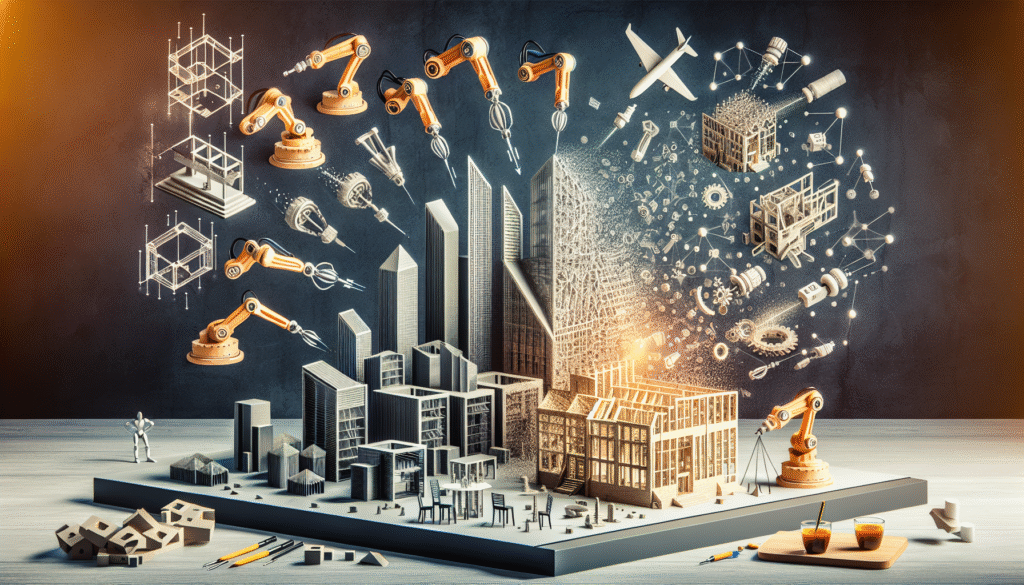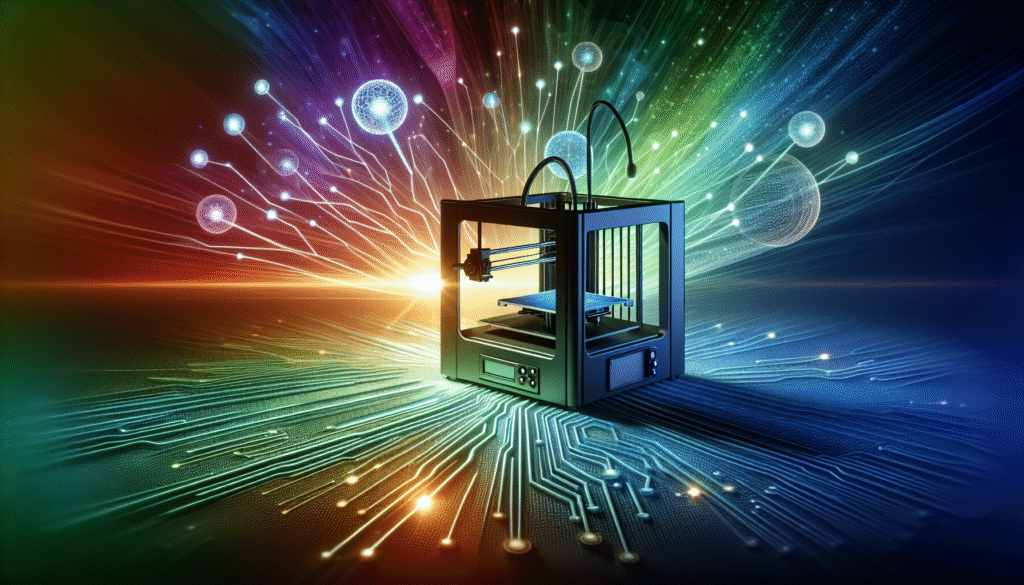Have you ever marveled at the intricate details of a scale model or the sheer innovation of a 3D-printed building? I’m often amazed at how architectural visions come to life through the use of 3D printing, spanning from the smallest of miniature models to grand structures that seem to defy gravity and imagination. The evolution of technology continues to shape our world, and 3D printing stands at the forefront of this transformation, offering groundbreaking possibilities in architecture.
This article will walk with you through the fascinating applications of 3D printing in architecture, exploring how it has revolutionized the creation of scale models and entire buildings. We’ll also touch upon the various advantages, challenges, and future prospects of this incredible technology. Let’s have some fun unraveling these intricate layers together, shall we?

The Rise of 3D Printing in Architecture
Overview of 3D Printing Technology
Imagine a machine that can create almost anything. That’s essentially what 3D printers do. Born from the idea of additive manufacturing, 3D printing layers materials to form three-dimensional objects based on digital designs. This process is a stark contrast to traditional subtractive methods, where material is removed to create an object. From its inception, 3D printing has captured the imagination of industries worldwide, but few have been as profoundly influenced as architecture.
The Need for Innovation in Architectural Design
Architecture is a disciplined blend of art and science, an arena where innovation meets functionality. With cities growing at an unprecedented rate and the demand for sustainable solutions on the rise, architecture is pressured to evolve. Enter 3D printing. It offers cost-effective, efficient, and eco-friendly solutions that align perfectly with today’s architectural demands.
The First Step: Scale Models
Before erecting towering skyscrapers, architects start with models—small-scale representations that speak volumes. These models are crucial in the architectural process, providing a tangible preview of future projects and helping architects communicate their vision to stakeholders and clients.
3D Printing in Scale Model Making
Precision and Detail
Imagine crafting tiny windows, delicate arches, and minuscule rooftops by hand. Tedious, right? 3D printing streamlines this process, producing detailed and precise models at a fraction of the time. This ability to generate intricate details with pinpoint accuracy makes 3D printing a game changer for architects.
Speed and Efficiency
Believe it or not, crafting scale models by hand could be a labor-intensive process. With 3D printing, that arduous task turns into a speedy operation. Designs are uploaded to the printer, and voila, a model is ready much quicker than traditional methods. Architects can revise designs quickly, encouraging more creativity and iterative development.
Cost-Effectiveness
Time is money, as they say. 3D printing helps architects save both. The cost of materials is reduced as printers use just what’s necessary. Furthermore, the rapid construction of models means fewer hours spent laboring, which translates into financial savings.
Example: The Modern Renaissance
Consider a firm that wishes to pitch a new urban development project. They would need to showcase not just one but multiple iterations of the design. With 3D printing, producing several scale models to demonstrate various concepts becomes feasible, enabling clients to envision the end product better.

Moving From Models to Full Buildings
A Leap in Scale
Making the jump from models to full-sized buildings might sound like science fiction, but it’s happening. Architects and engineers are now leveraging large-scale 3D printers to construct entire structures layer by layer. This approach is not just feasible; it’s paving the way for an architectural revolution.
Benefits of Full-Scale 3D-Printed Buildings
The impact of 3D printing full-scale buildings is profound. Let’s uncover some key benefits:
Sustainability
3D printing uses fewer materials and produces less waste than traditional methods, aligning beautifully with the growing demand for sustainable architecture. Many materials employed in 3D printing, like biodegradable composites and recycled plastics, are also environmentally friendly.
Customization
In the world of architecture, one size does not fit all. 3D printing enables architects to explore custom, unique designs without the constraints of conventional building techniques. The possibilities for innovative design are virtually limitless.
Speed of Construction
Imagine erecting a structure within days instead of months. 3D printing makes this dream a reality. With no need for transportation of large construction materials, staffing requirements decrease, and the pace of construction quickens.
Reduced Costs
Building with 3D printing can be far more economical. Labor and material costs diminish, highlighting how this approach could transform affordable housing initiatives around the globe.
Challenges Facing Full-Scale 3D Printing
While the advantages are enticing, the journey isn’t without its obstacles. Let’s take a look at some roadblocks standing in the way:
Regulatory Hurdles
Navigating legal and regulatory landscapes can be tricky. Current building codes and regulations are often ill-prepared to accommodate 3D-printed structures, posing challenges to widespread adoption.
Longevity Concerns
As with any novel technology, questions about the long-term durability of these structures linger. While initial studies are promising, continued research is required to ensure the safety and sustainability of 3D-printed buildings over time.
Limited Material Choices
Although the range of materials is expanding, standard construction materials like reinforced concrete might still be superior under certain conditions. Ensuring that the materials used hold up to structural demands remains a priority.
Success Stories of 3D-Printed Buildings
Here are a few examples of how architects have successfully employed 3D printing in building construction:
-
Apis Cor’s House: A Russian firm, Apis Cor, managed to print an entire house in less than 24 hours, demonstrating the speed and efficiency of the process.
-
The Lewis Grand Hotel: In the Philippines, portions of this hotel were constructed using 3D printing technology, showcasing its potential in the hospitality industry.
-
The Yhnova Project: In France, a social housing unit was 3D-printed to explore cost-effective and sustainable residential construction.
The Future of 3D Printing in Architecture
Emerging Technologies and Trends
The horizon is bright with promise as technology continues to advance. Emerging trends in 3D printing include robotics-assisted printing, the development of novel materials, and hybrid construction techniques combining traditional and modern methods.
Impact on Global Construction and Design
Imagine a world where affordable, high-quality housing is accessible to communities worldwide. That vision is central as 3D printing matures and gains traction. Resources and housing could be distributed more equitably, potentially transforming global economies and societies.
Collaboration and Innovation
Progress thrives on collaboration. As architects, engineers, and technologists work together, the scope of what can be achieved through 3D printing expands. Pushing the boundaries of architecture challenges traditional industry practices and encourages a culture of innovation.
Conclusion: An Architectural Shift
In conclusion, the advent of 3D printing in architecture marks a significant shift in how we conceptualize and construct spaces. From detailed scale models that grasp the eye to full-sized buildings that challenge the essence of conventional construction, this technology isn’t merely a tool; it’s a catalyst that shapes the future of architecture.
Sure, challenges abound, but nothing worthwhile was ever achieved without overcoming obstacles. As we forge ahead, embracing the possibilities of 3D printing, we are reminded of the profound impact technology has on enhancing human life and sheltering futures yet to be built.
As I put my thoughts to rest for now, I am left dreaming of buildings that rise in harmony with technology, creativity, and sustainability—one layer at a time.


